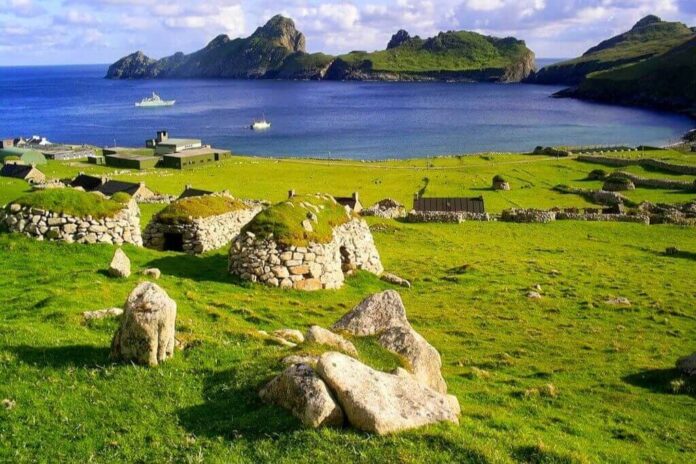A lonely archipelago called St Kilda can be found 40 miles to the northwest of North Uist. It is a member of Scotland’s westernmost group of islands known as the Outer Hebrides. Due to its stunning natural surroundings and diverse culture, this archipelago was inducted into the UNESCO World Heritage List in 1986. Here are some further island-related facts.
1. The islanders’ dietary habits were interesting.
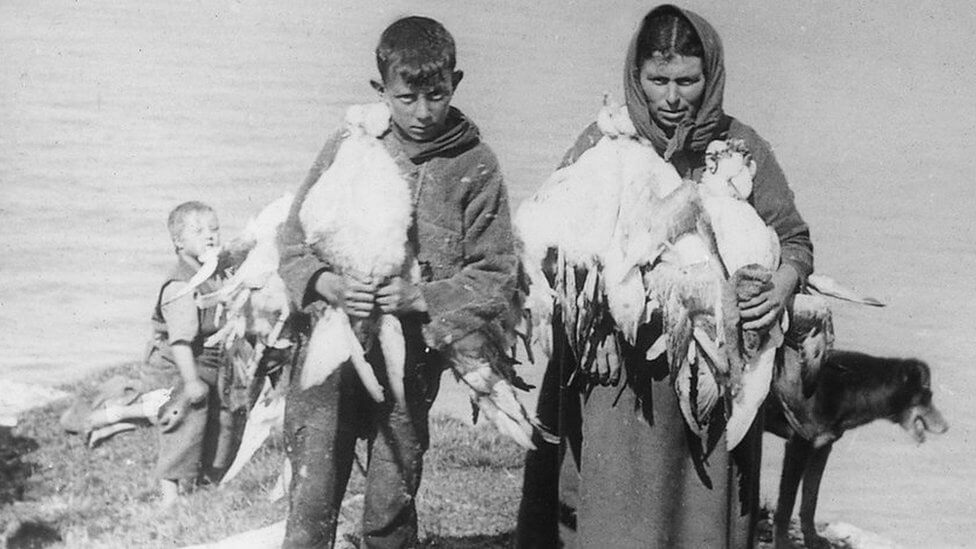
The inhabitants of this island had a distinctive diet. They ranched sheep and cattle and were livestock farmers.
In the area of the island that had good drainage, they also produced potatoes and barley. It was one enormous mixed farm, the island. Due to the choppy waters and harsh weather, fishing was not frequently practiced.
Sheep’s milk was used to make cheese. They consumed both the eggs and the meat of seabirds. Fowling rods were also used to catch adult puffins.
2. The Island was visited by Vikings.
A number of archaeological discoveries have been made on the islands. There is sufficient evidence to support the Bronze Age’s existence.
For more than 2,000 years, it is thought that the Vikings frequented the islands.
Most islanders resided in the communities of Bay and Gleann Mor. The majority of them are now vacant, and the area has become grassland.
The Macleods’ two settlements on the island were built between 1836 and 1865.
The island saw its first ship-borne visitors in 1834. In 1930, the islanders were removed from it.
3. Various bird species can be found there.
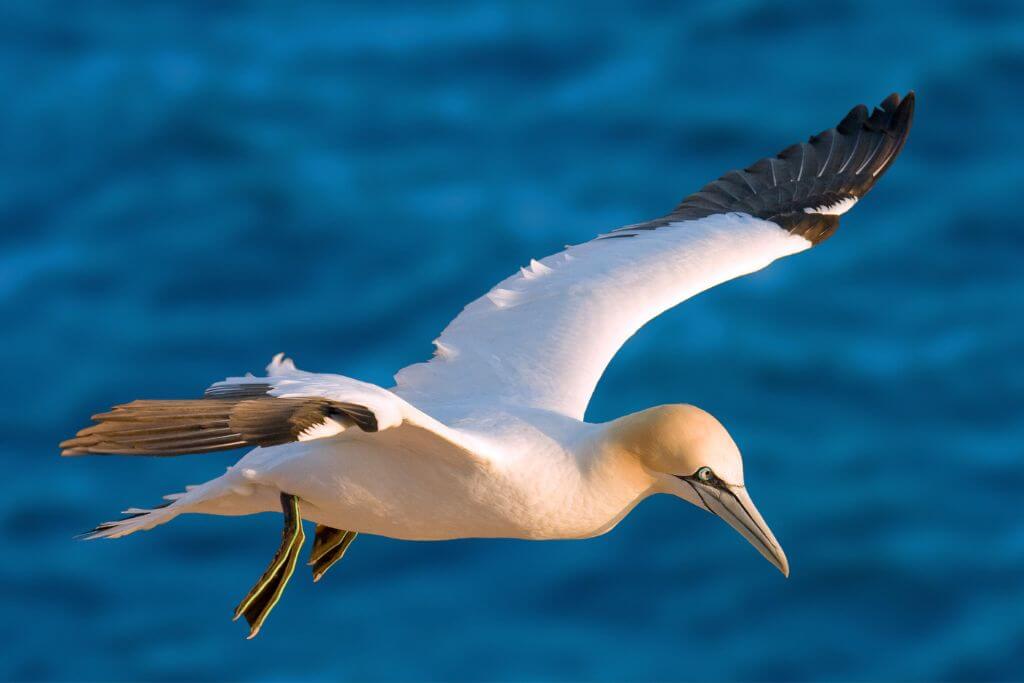
More than a million seabirds can be found on this island. During the breeding season, the number increases.
The greatest seabird population in the northeast Atlantic may be found in St. Kilda. In terms of size and variety, it is a sanctuary for birds.
The island is the finest place to breed because of its wide range of biological niches and complicated structure. It is additionally what distinguishes this island.
The Northern Gannet, Atlantic Puffin, and Northern Fulmar have some of the island’s greatest bird populations.
These birds are not afraid of humans. Some of them fly or stand near walkers, but if someone gets too close to their nests, they won’t hesitate to attack.
4. The Island’s stone structures date back to the Stone Age.
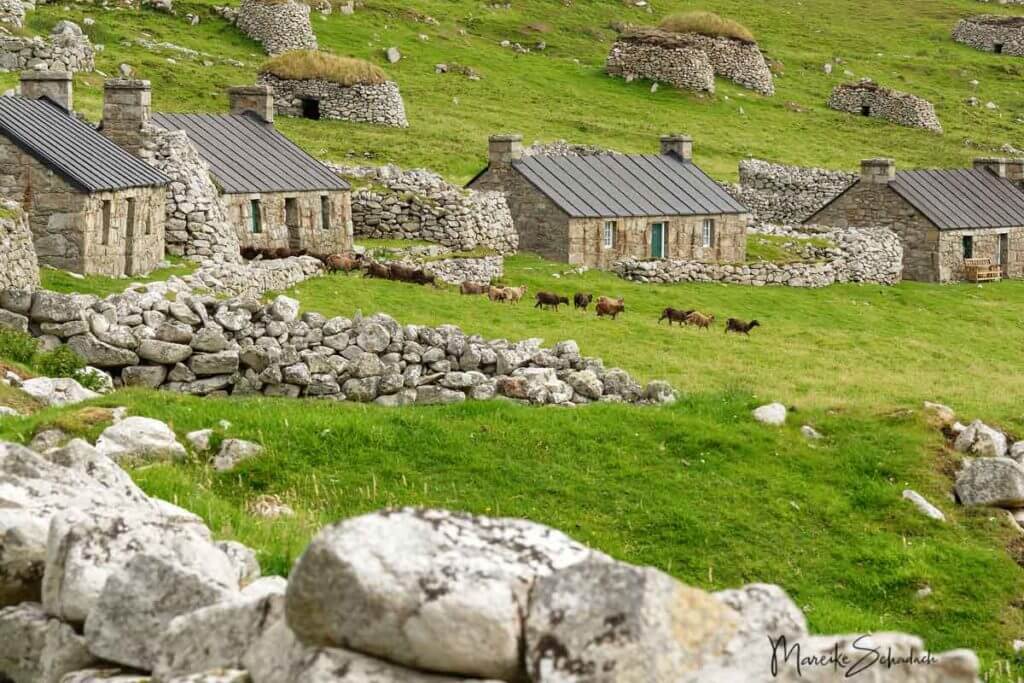
On the island, stone structures are thought to have been constructed during the Iron Age.
The island’s steep slopes were terraced ground used for farming, according to archaeologists. On the terraces, they may also locate seeds.
It is amazing how well humanity adapted to living on the island. On the island, houses were made of two symmetrically facing, long, corbelled rectilinear or convex walls.
The walls’ supporting stones featured slanted faces that were thought to be either man-made or natural.
5. The Island has stunning scenery.
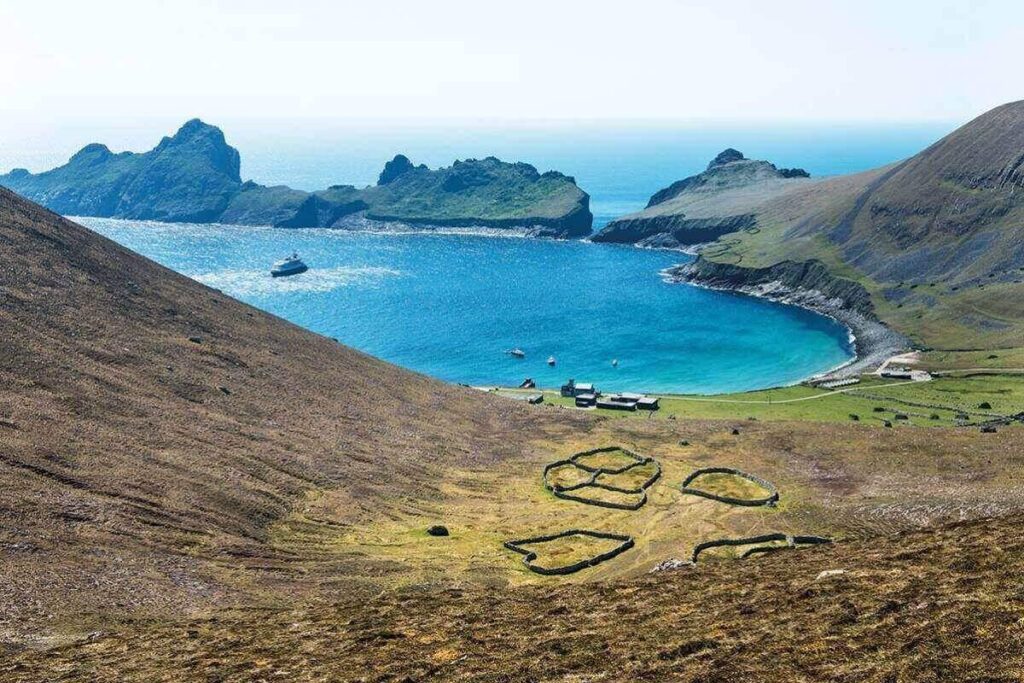
Despite having a human population, this island has been able to preserve its natural beauty over time.
This island is home to some of Europe’s tallest cliffs. The uncommon bird species that reside on the island call the cliffs their homes.
Like the puffins and gannets, some of the birds that build their nests on the cliffs are in danger.
The island’s geology, sea cliffs, sea caves, reefs, and underwater life are significant to Scotland. Traditional structures are strewn over the countryside.
The island’s cliffs have attracted a number of rock climbers. It is thought that recreational rock climbing first appeared in the 17th century.
- Related post 6 Marvelous UNESCO World Heritage Sites in Scotland
6. There are various seashore cliffs on St Kilda Island.
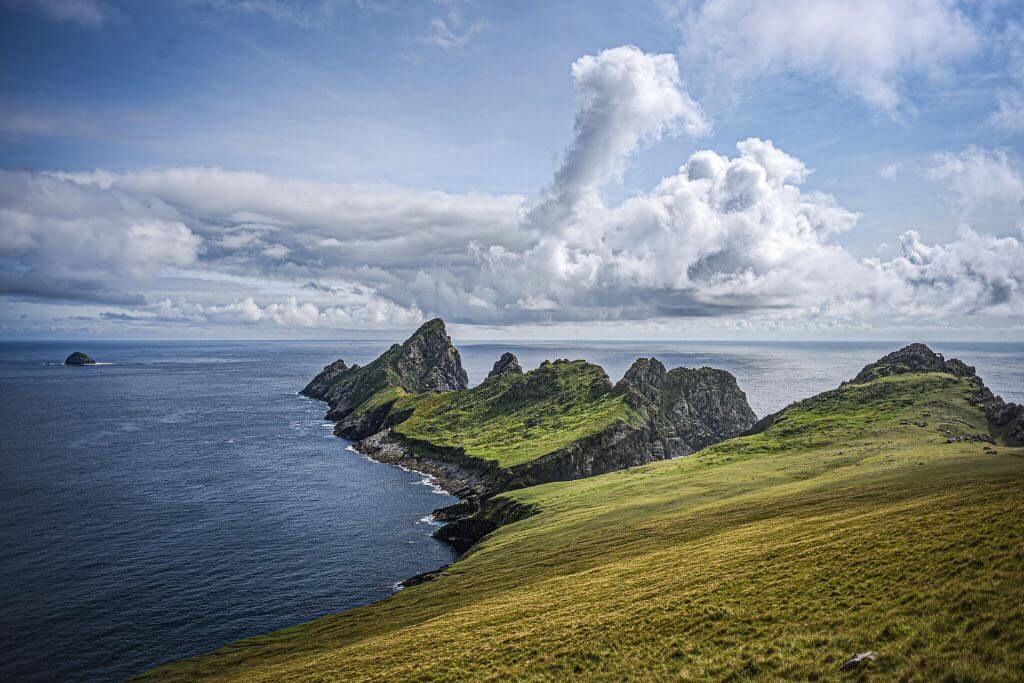
Some of the most amazing sea cliffs in the British Isles can be found in this area. The island offers the most lush landscape in the area and is untouched by beauty.
High hills surround Hirta Island, particularly the small village of Village Bay.
Conachair’s entire north face features a 1,401-foot-tall sheer cliff along the length of it. One of the highest cliffs in the UK is this one.
7. It has been inhabited for almost 2,000 years.
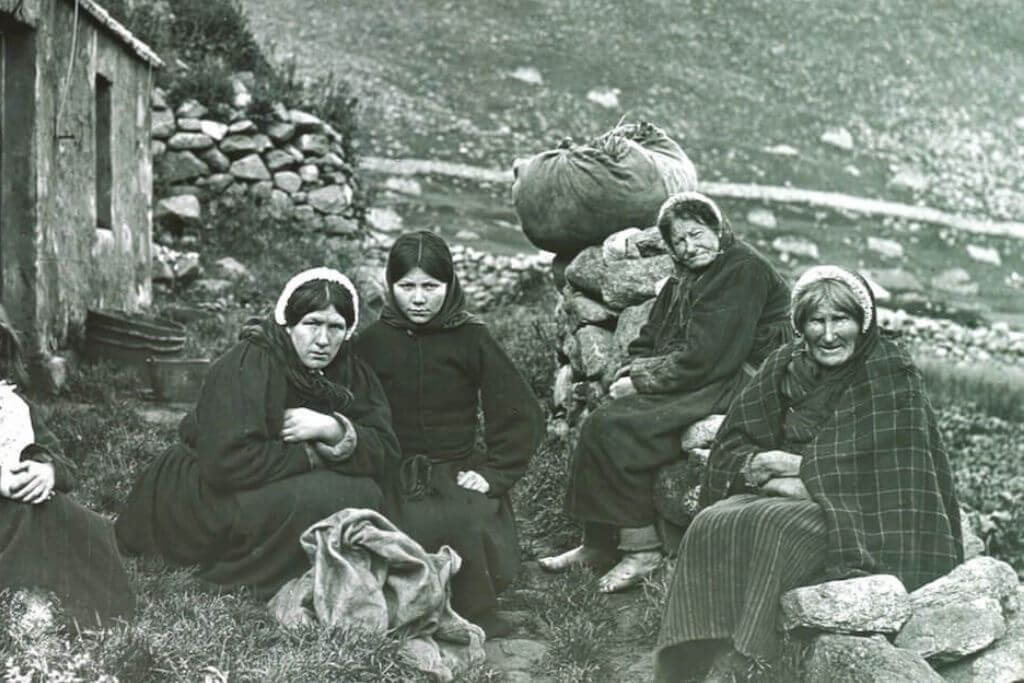
More than a thousand years have passed with no interruption of habitation on this island. Humans have lived there since the Bronze Age and up until the 20th century.
Fragments of pottery thought to be Hebridean ware have been discovered by archaeologists.
At Village Bay, they also discovered quarry tools, additional stone hoe blades, grinders, and Skaill knives.
The tools discovered are thought to be Neolithic in origin. These discoveries demonstrate that Village Bay was one of the island’s densely populated regions.
8. In the 13th century, St. Kilda was first documented.
St. Kilda’s first entry into writing occurs from 1202 forward. A cleric who temporarily remained in one of the shelters there wrote it down.
Early explorers claimed to have discovered Danish coins, an iron sword, and brooches. However, there is no proof of the Vikings’ existence.
There is proof that those who inhabited the island were poor and fervently religious. These people had adapted to the hard environment, so they needed natural resources like eggs from birds and other animals to survive.
9. Through their ship, outsiders brought dreadful illnesses.
Due to its distant position, the island did not receive many daily visitors. Cholera and smallpox claimed the lives of numerous people in the 18th century.
Because there were so few survivors, more people were brought in from Harrs. By the end of the century, there were more than 100 people living there. The population increased to 88 by 1758.
A few island residents traveled by ship to Australia.
The laird’s decision to shut down the church and manse for a number of years during the Disruption that led to the formation of the Free Church of Scotland was a contributing factor in the exodus.
10. Islanders practiced religion.
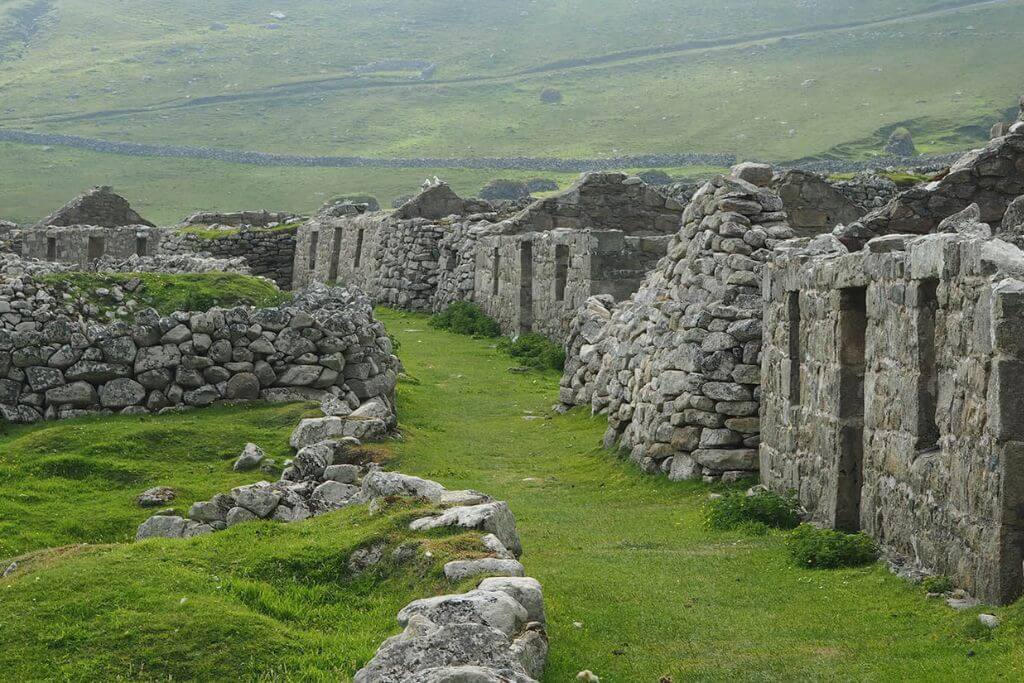
Alexander Buchan, a man, brought Christianity to this area around 1705.
He spent seven years residing on the island. He attempted to persuade the islanders to join his organized s area during his stay but was unsuccessful.
A few years later, a different missionary arrived on the island of I822 and had a profound effect on the islanders’ life. Every day, the Rev. John MacDonald gave 13 sermons.
There were many tears shed when he left the island because the residents had grown to love him. He was followed by Rev. Neil Mackenzie, who also brought formal education and agriculture.
